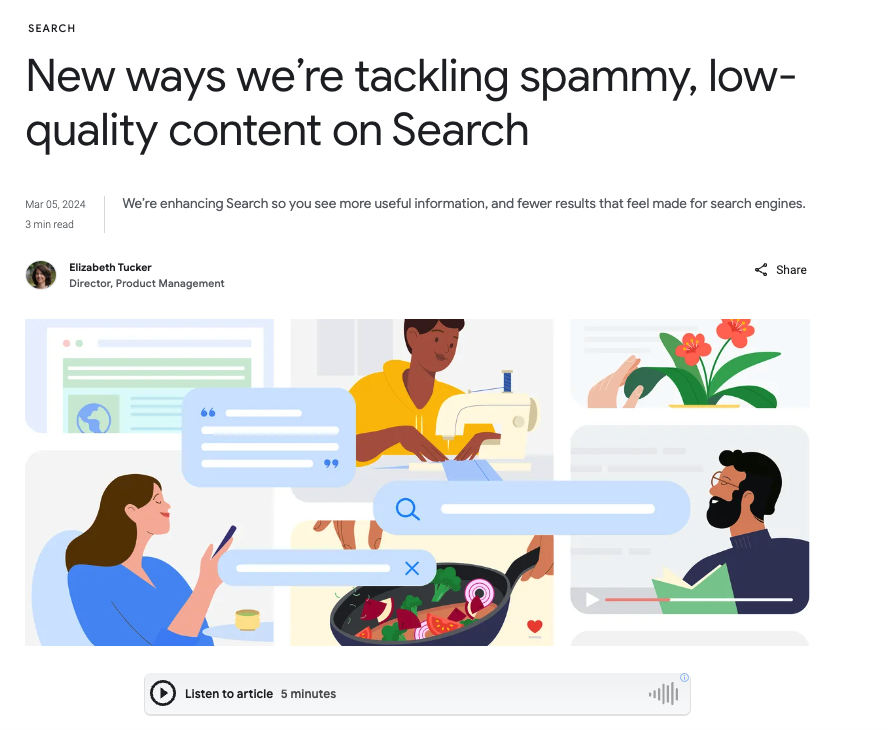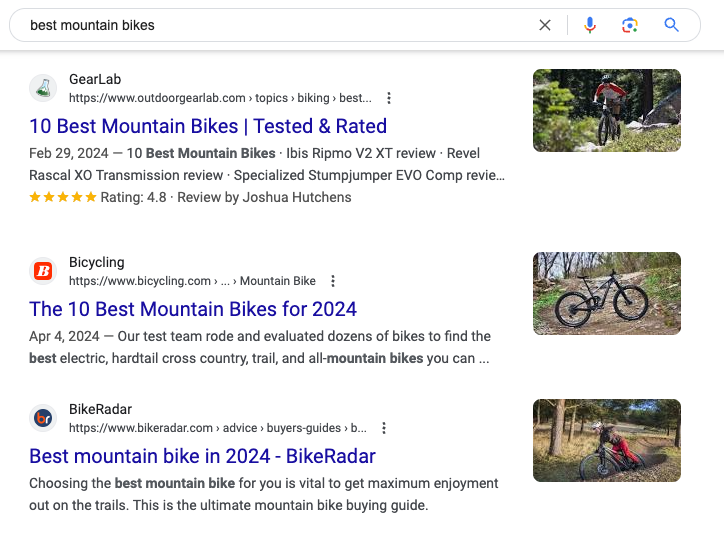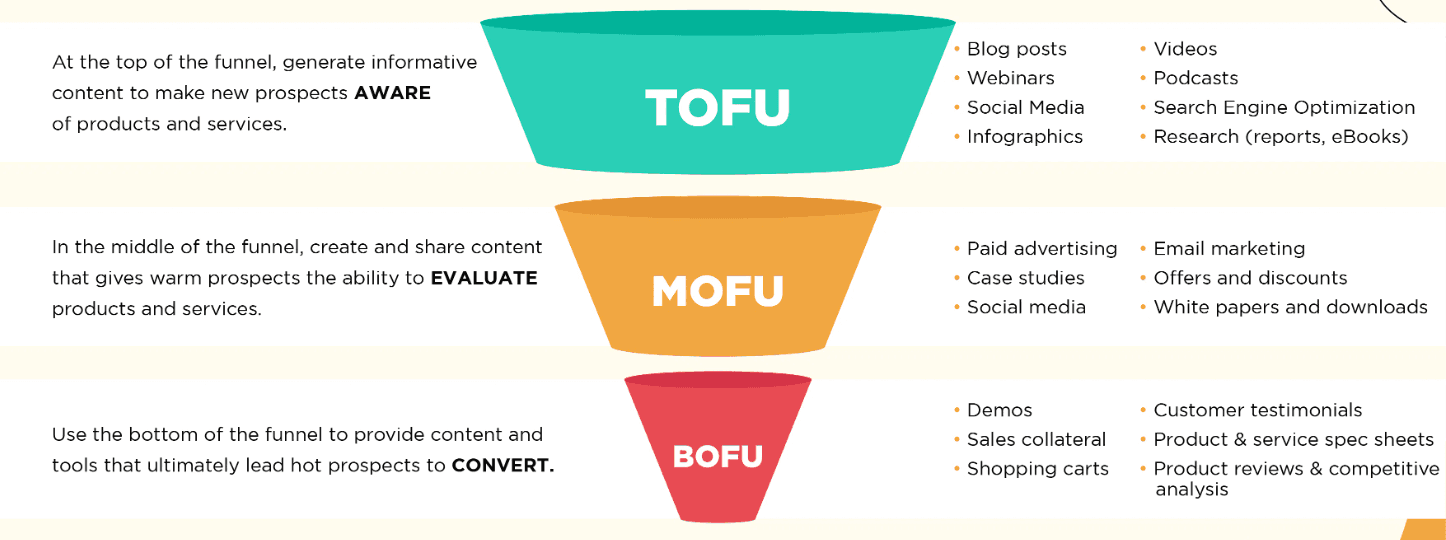Table of Contents
- Home
- »
- Superbrewed Insights
- »
- Winning the game of content marketing with Lauren Funaro of Scribe
-
Natalie Hoberman
- 6 minutes read time
Winning the game of content marketing with Lauren Funaro of Scribe
- Home
- »
- Superbrewed Insights
- »
- Winning the game of content marketing with Lauren Funaro of Scribe
Winning the game of content marketing with Lauren Funaro of Scribe
Table of Contents

When it comes to content marketing, it’s become crystal clear that the times are changing.
As consumer behaviors evolve, attention spans shrink, and algorithms increasingly favor value over keywords, marketers and businesses face new challenges and opportunities. So, what do these changes mean for content marketing? Moreover, what do they mean for companies relying on content marketing for conversions?
We recently sat down with Lauren Funaro, Head of Content at Scribe and a seasoned content marketing strategist. (In case you’re unfamiliar: Scribe’s AI-powered tool helps users easily document business processes into customizable step-by-step guides. Learn more about the company here.)
With a rich background in content strategy and SEO, Lauren has skillfully steered the content team at Scribe from its early startup phase to becoming a Series B-backed enterprise. During our latest Superbrewed session, she offered deep insights into her journey, the challenges of ranking on search engines today, and why companies need to start diversifying their content if they want to gain an edge online.
The evolution of search engine rankings
For Lauren, the art of ranking on search engines is a game.
With an English degree, she always knew deep down that she wanted to write. Marketing provided her with an avenue to hone her writing skills while developing her analytical and strategic abilities. As her role grew at Scribe, she had to learn how to navigate the complex landscape of organic search.
But to her, that’s all part of it.
“The evolution of the search engine results pages (SERP) is very fun,” Lauren remarked, reflecting on recent shifts. “It’s an opportunity, but it’s evolving dramatically.”
Earlier this year, Google announced it made key changes to its algorithm in an effort to reduce “spammy, low quality content” and remove unhelpful, error-filled content from the rankings. This announcement further solidified what we’ve been seeing in the industry ourselves: value-packed, helpful content is in. Repetitive, keyword-stuffed blogs are out.

Another noticeable shift Lauren stressed is the growing importance of directly answering your reader’s question in your content. For many writers, this is where it can get messy. As Lauren pointed out, it’s one thing to be a strong writer. It’s a whole other ballgame to be a strong writer who is also a great marketer.
“There’s some confusion around what excellent content actually means,” said Lauren. “A lot of the time it’s going back to the basics. What is the query? What does this person actually want? They aren’t looking for a flowery response. They’re not looking for this overproduced piece. What they’re looking for is really the most correct and useful answer.”
To maximize engagement and conversions, companies must look beyond mere word count, considering their audience’s search intent and crafting content that directly addresses those needs.
That’s one of the elements that makes SEO distribution “so exciting” for Lauren, she said. Rather than sharing content and hoping someone stumbles upon it (a la social media), with organic search, you can provide your audience with the content at exactly the point when they need it most. “It’s about refining and evolving our content to really match that need,” she added.

In this case, the search intent is to find the best mountain bike. Answering the question (“What is the best mountain bike?”) in your blog will help you rank higher on Google, as these blogs have!
The shift goes beyond the words on the page, too. Everything from your blog’s design, to the imagery, to the captions you write, makes an impact—and it’s important to play around with each element to find opportunities for improvement.
Why you should prioritize top-of-funnel traffic
That leaves us with an important question: If we’re prioritizing search intent, what stage of the buyer journey should we be focusing on?
An ongoing debate among content marketers, especially within the Software as a Service (SaaS) community, is whether to prioritize top-of-funnel (TOFU) or bottom-of-funnel (BOFU) content. TOFU content aims to educate and attract the widest audience with blogs, videos, and infographics, while BOFU content seeks to convert readers at the decision-making stage of their buying journey. (If you spend just 10 minutes scrolling on LinkedIn, you’re almost guaranteed to come across at least one heated argument championing either side.)

For Lauren, the strategy is clear.
“At the very beginning, top-of-funnel is the most useful,” she argues. “If you’re creating these really deeply integrated bottom-of-funnel pages, you’re not going to get enough traffic to really work in your favor or gain topical authority.”
Statistics support Lauren’s statement. According to data from Outreach, inefficiency at the top-of-funnel stage can account for 37% of missed conversion expectations.
The role of testing in content marketing
Every content marketer will face a similar conundrum at one point in their life: do you opt for quality or quantity?
When Lauren’s team at Scribe wrote 700 blogs in one year, you could argue their main objective was quantity. But what if we were to tell you that it was all one big bold experiment meant to improve the overall quality of their content?
Lauren first joined the Scribe team in 2022 as a Content Editor when Scribe was a budding startup. At the time, the company had zero content online—meaning zero insights for Lauren to glean from.
“We knew that content was something we wanted to pursue, but we were learning so much about the product even,” she said. “We actually weren’t sure what content types would resonate, or who we should be focusing on. In order to do that, we needed a lot of content out there to test.”
So, they hired more than a dozen freelancers, retained the excellent ones, perfected the briefs, and produced over 700 organic blogs in a year with a lean team. This feat wasn’t about churning content for the sake of numbers—it was a strategic move to identify gaps, understand audience needs, and optimize their content marketing strategy.
The biggest takeaway? Lauren and her team discovered that content showcasing real-world applications of Scribe performed the best. So, they drilled down, aligning their content with user pain points and offering potential solutions in the blogs.
Lauren also discussed the critical role of freelancers in scaling content production. The key, she noted, isn’t just in finding good writers but in cultivating a team that understands the brand voice and audience.
“We wanted to find folks who could write to the channel, who were able to adapt, and had a great memory for feedback from us,” she says. This approach helped Scribe not only to increase their content output significantly but also to enhance the quality of each piece published.
Diversifying your content in the age of AI
If Scribe’s ambitious blog experiment were conducted today, one would probably expect AI to be a significant player. However, Lauren’s strategy for content marketing involves a judicious use of AI, which it supports, but does not replace human creativity and insight. At Wordbrew, we believe this type of hybrid content that combines machine learning with human expertise is the most efficient way of generating meaningful, engaging content.
Lauren said she does not see “AI blogs coming and taking anyone’s ranking… in the near future.” Still, there are specific uses where AI is helpful—such as when creating an initial draft, internal documents or templates, and synthesizing data.
Looking ahead, Lauren remains cautiously optimistic about the evolving landscape of content marketing and SEO. As AI and search technologies advance, marketers must adapt their content strategies accordingly.
“The reality is the SERP is pulling things in a very different way now,” Lauren said. “So even if you are ranking number one, it’s not going to show up in the way that it used to, and you are going to be competing with pages that are sponsored. You’re going to be competing with the AI-generated response. So finding ways to create different content types that are going to support these different ways that the SERP is moving will be incredibly vital.”
These changes will also require us to think differently about how we share and repurpose our content online. Rather than “creating a piece of content and finding six distribution channels” for it, we should be “understanding those channels and then making it work for those channels,” Lauren said.
Creating impactful content that converts leads and performs well on search engines is not out of reach for companies. However, it is becoming clear that innovation, adaptability and a keen understanding of user intent will be the cornerstones of successful strategies moving forward. If companies want to stand out amid the deluge of AI-generated content on search engines, they’ll have to play along.
Want to publish content that speaks to your audience? Every piece Wordbrew creates is on-brand and edited by SMEs, so your content never misses the mark. Sign up today and get your first blog free!